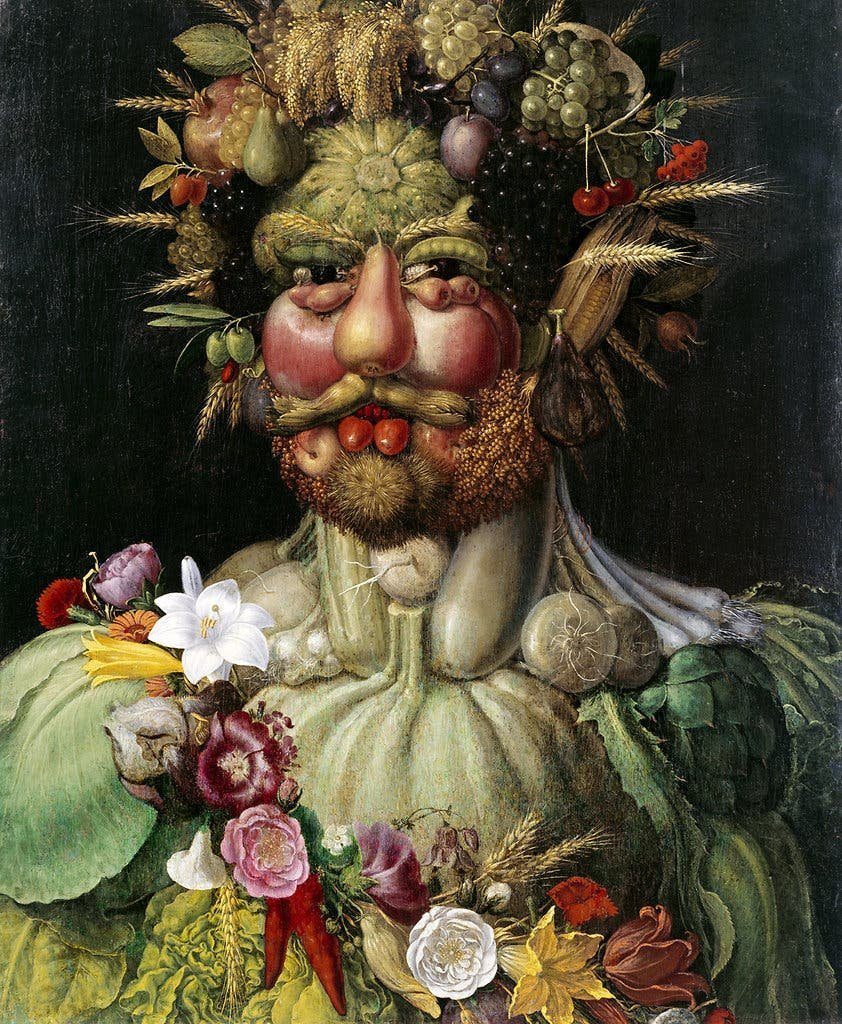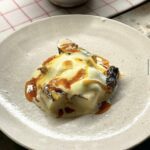Part I: A Monologue
Food is art.
Here we confront the enigma of whether food should be considered art. The question is a tricky one, as the meaning of both terms is elusive. Nonetheless, the last few decades have seen a growing movement to elevate food to the status of high art, as exemplified by Ferran Adrià’s participation in documenta, a quinquennial contemporary art exhibition, in 2007. Adrià’s restaurant, elBulli, became a documenta pavilion and two people were chosen randomly from the visitors daily during the 100-day exhibition to dine at elBulli. While some questioned the inclusion of a chef in a contemporary art exhibition, the exhibition’s artistic director saw the value in recognising the artistry of cooking:
“I have invited Ferran Adrià because he has managed to create his own language, something that has turned into a very influential issue on the international scene. This is what I am interested in, I don’t care if people consider it as an art or not. It is very important to mention that artistic intelligence does not depend on the format; we should not relate art only with photography, sculpture, painting…, neither with cooking in its most strict sense. But under certain circumstances, cooking can also be considered as an art.”(1)

It is worth noting that a number of prominent chefs view food as an art form. Dominique Ansel, for example, believes that food is a more intimate form of art than others, as it engages all of our senses. José Andrés echoes this sentiment, stating that art should provide a thrilling sensory experience. However, it’s worth keeping in mind that not all food is created equal when it comes to achieving artistic status. According to Elena Arzak, cooking can only truly be considered an art form in those instances where particular aspects of the craft exhibit exceptional levels of creative expression, comparable to other forms of art.
I’m inclined to side with Gombrich, who maintains that “taste in art is something infinitely more complex than taste in food and drink”.(2) There’s a common tendency to consider the culinary arts as a rather modest and unpretentious form of expression.(3) Nonetheless, Nathan Myhrvold, the author of Modernist Cuisine, cheerfully asks why food cannot be an art in the same way that music can be. Steven Poole replies that it’s self-evident that a steak is not the same as a symphony, a pie isn’t a passacaglia, and foie gras isn’t a fugue; that the design of a menu differs from that of a requiem; that the cook who prepares and presents the food is not Charlie Parker’s artistic counterpart.(4)

Art critics, Blake Gopnik and William Deresiewicz, are also opposed to the idea that food is art. Gopnik who actually experienced Adrià’s dishes at elBulli, found that:
“All but the most radical dishes at elBulli come off as relatively tame, at least when compared with the most daring contemporary art. A surprising amount of this cooking is still mostly about what goes on in the mouth: some new ingredient that comes as a shock (until you get used to it) or new flavors and textures conjured from old foods. In fine-art terms, you could say that a lot of it is still stuck in abstractland, riffing on the same old palette (or palate) of sensations; whereas today’s best art can try to say important things about the world and change the way we think about it. It’s about new content as well as novel sensations.”(5)
Deresiewicz is equally severe in his critique of food as art:
“But food, for all that, is not art. Both begin by addressing the senses, but that is where food stops. It is not narrative or representational, does not organize and express emotion. An apple is not a story, even if we can tell a story about it. A curry is not an idea, even if its creation is the result of one. Meals can evoke emotions, but only very roughly and generally, and only within a very limited range — comfort, delight, perhaps nostalgia, but not anger, say, or sorrow, or a thousand other things. […] Proust on the madeleine is art; the madeleine itself is not art. A good risotto is a fine thing, but it isn’t going to give you insight into other people, allow you to see the world in a new way, or force you to take an inventory of your soul”. (6)

Why does the premise that food is art matter? In an earlier piece, I noted that there has been an increasing tension between those who believe that the quality of ingredients is paramount (the “ingredientistas”), and those who prioritize innovation and surprise through creative techniques (the “modernistas”). This debate reflects a broader conversation in the world of art and gastronomy, where some chefs push the boundaries of creativity and experimentation, while others focus on perfecting their existing creations. This tension is reminiscent of the distinction between fine arts and applied arts, where some forms of art prioritise the creative process and innovation, while others value tradition and mastery.(7) However, the notion of food as a form of fine art is not without its challenges. If we consider food to be a form of art, we risk diminishing the value of art itself, by making it appear too easy to achieve.(8) Moreover, we risk overlooking the essential values of gastronomy, such as repetition, artisanship, and tradition. Therefore, while there may be similarities between art and gastronomy, it is important to recognise their unique qualities and the distinct ways in which they contribute to our cultural experiences.
In the second part of this article, I will embark on a hypothetical conversation with a friend to explore in detail the ways in which art is relevant to the realm of gastronomy. We will traverse the landscapes of taste and aesthetics, savouring the flavors and textures of a carefully crafted meal while considering the artistic principles that guide its creation. Through this conversation, we hope to illuminate the rich and complex relationship between art and gastronomy, and perhaps discover new ways to appreciate both.
References:
- gifre.com
- Gombrich, Story of Art, p 17.
- Telfer, Food as Art, p 26: hettingern.people.cofc.edu
- theguardian.com
- (Gopnik, “Palate vs. Palette”). opencommons.uconn.edu
- (Deresiewicz, “A Matter of Taste?”) opencommons.uconn.edu
- I believe that this idea of food as a form of fine art is still a very strong claim. It is much stronger than “traditional phrasing such as “the art of cookery”, a more modest attribution of creativity and craft (techné rather than poésis) to quotidian activity”: theguardian.com
- When food is seen as a form of art, this prejudices both art and gastronomy. It prejudices art because “what does it say about our expectations of art if food can meet them so easily?”: bbc.com





Nicely balanced article…🙌